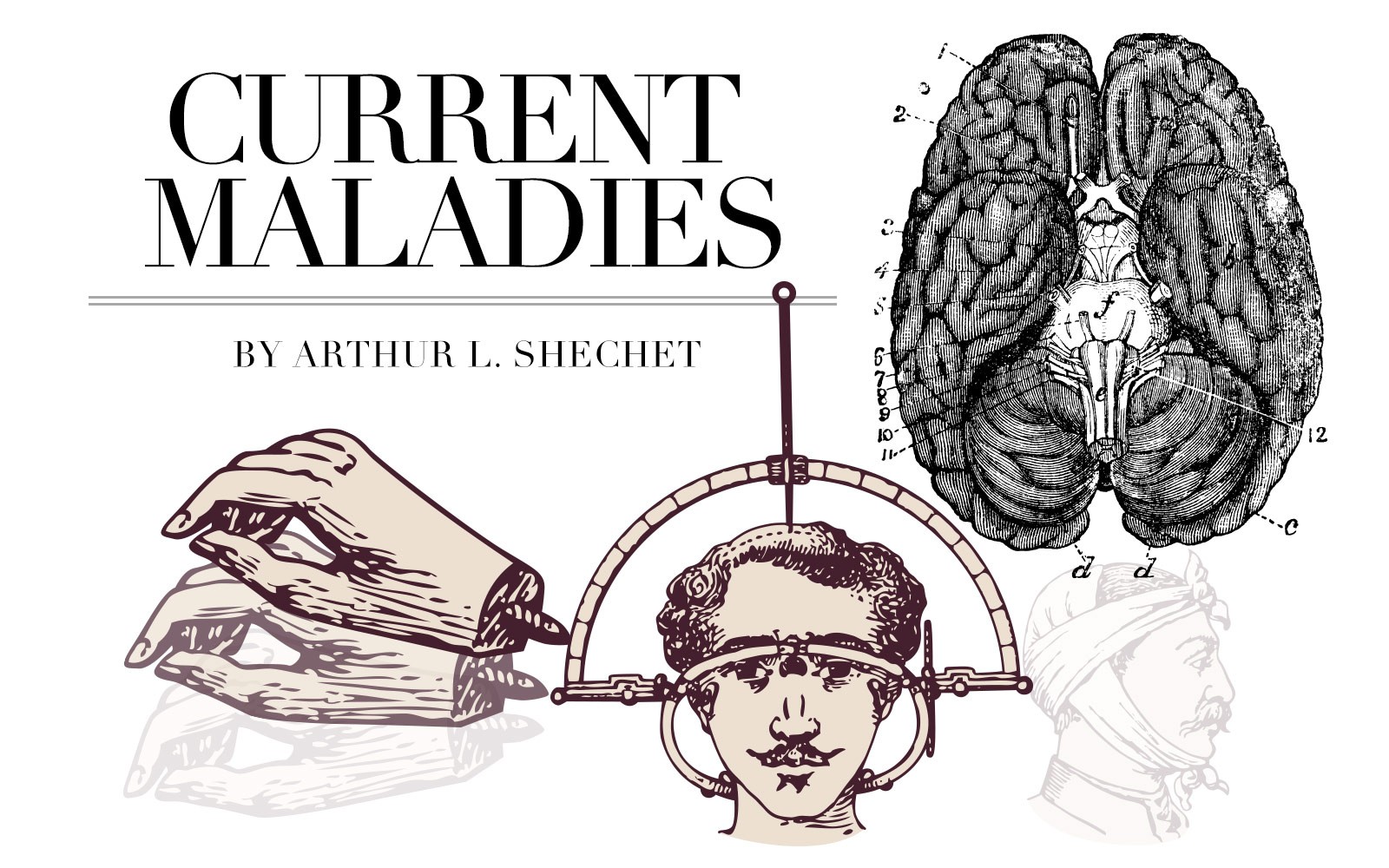
Instantania –
Primary Characteristic: An increasingly pervasive behavioral syndrome characterized by the compulsive need to make instant judgments without thought or consideration. It is more commonly known as Walking Exclamation Pointitis, as individuals with the disorder are found to be momentarily most emphatic in their responses, judgments, or opinions, though frequently lacking even the most superficial knowledge of the issue or person in question.
Secondary Characteristics: Individuals with Instantania often are unable to attend to a subject for more than an instant, preferring quick bursts of seeming involvement and quick, mercurial judgments. They are often distressed when presented with printed or digital text of more than 140 characters. When encountering others in large social situations they may avoid eye contact with you and a quick succession of others, annoyingly scanning the room for more socially important individuals, a primary characteristic of a related syndrome, Socialitis Superficialis.
 It appears that Instantania manifests itself in mostly negative, hostile, or angry instant judgments, although behavioral anthropologists have found significant diagnostic subgroups in several Brooklyn neighborhoods to suffer from Instantania Optimitis, in which individuals are unremittingly positive about anything peers are doing. Individuals with primary Instantania may briefly exhibit symptoms of Instantania Optimitis when under the influence of MDMA. When confronted by others, individuals with Instantania may instantly apologize without any genuine concern, may claim total amnesia for the judgment inflicted, or exhibit no remorse and block the accuser on their Facebook page. Diarrhea is a frequent occurrence in individuals with the disorder.
It appears that Instantania manifests itself in mostly negative, hostile, or angry instant judgments, although behavioral anthropologists have found significant diagnostic subgroups in several Brooklyn neighborhoods to suffer from Instantania Optimitis, in which individuals are unremittingly positive about anything peers are doing. Individuals with primary Instantania may briefly exhibit symptoms of Instantania Optimitis when under the influence of MDMA. When confronted by others, individuals with Instantania may instantly apologize without any genuine concern, may claim total amnesia for the judgment inflicted, or exhibit no remorse and block the accuser on their Facebook page. Diarrhea is a frequent occurrence in individuals with the disorder.
Environmental Considerations: The syndrome manifests itself most frequently or clearly on digital devices and applications. Facebook users appear to be most at risk for development of the disorder, although pre-Facebook precursor behavioral proclivities are found in a number of more recent studies.
 Epidemiology and Other Correlates: While early studies appeared to show the highest rate of prevalence of Instantania in individuals between the ages of 20 and 30 with multiple tattoos, more sophisticated recent studies have shown that finding to be a statistical artifact. The highest prevalence rates are in individuals between the ages of 55 and 70 who remain convinced that they are entitled to inflicting their ill-informed, fear-based opinions on others and that the world revolves around their generation. Early overuse of cannabis is a clear substrate for the development of Instantania in this age cohort. A subclinical syndrome of Cranky Blurtsomia is common in individuals commonly referred to as “Baby Boomers”, and usually finds expression in letters to the rapidly disappearing hard-copy newspaper editor pages rather than on digital applications.
Epidemiology and Other Correlates: While early studies appeared to show the highest rate of prevalence of Instantania in individuals between the ages of 20 and 30 with multiple tattoos, more sophisticated recent studies have shown that finding to be a statistical artifact. The highest prevalence rates are in individuals between the ages of 55 and 70 who remain convinced that they are entitled to inflicting their ill-informed, fear-based opinions on others and that the world revolves around their generation. Early overuse of cannabis is a clear substrate for the development of Instantania in this age cohort. A subclinical syndrome of Cranky Blurtsomia is common in individuals commonly referred to as “Baby Boomers”, and usually finds expression in letters to the rapidly disappearing hard-copy newspaper editor pages rather than on digital applications.
A significant clinical correlate of Instantania is Shamvision Acutamorgis, characterized by a seeming endless instant knowledge of all current cultural tropes, Netflix series, and alternative and independent movies, when said knowledge is obtained primarily by reading the first two Wiki sentences on anything.
Treatment: There are currently no FDA-approved pharmacological interventions for Instantania, although substantially increased gluten intake has been found to ameliorate the most severe symptoms in several small experimental studies. Removal of all digital devices has proven to be an effective preventive measure, however it places individuals at risk for development of thumb tendonitis from continued attempts to thumb-type on phantom handheld devices.
The only known successful treatment of Instantania is a deep reading of Infinite Jest.
